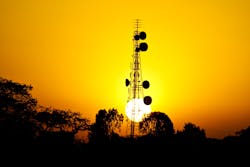How The Sunset Of 2G Could Affect You
The vending industry has steadily been adding cashless readers and remote monitoring devices to machines nationwide. It’s been a slow progression that has taken a much-needed steep increase in the last few years. However, right when it appears we’ve turned the corner, one of the pillars that enables vending machine telemetry is going away potentially causing loss of sales and efficiencies if operators aren’t proactive about it.
Industry experts suggest as many as 200,000 vending machines will be affected by this decommissioning of the 2G network by two prominent cellular communication providers. AT&T has already begun shutting down its 2G network with complete abandonment scheduled for December 2016. Verizon is also shuttering its 2G and 3G networks, with a cutoff date sometime in 2021.
What is 2G?
The term 2G represents digital communication technology that allows data to be sent from a vending machine with a credit card processor and remote monitoring system, often called telemetry. You may be familiar with cellular commercials that claim ‘the best’ 4G LTE network. This is an example of a newer wireless communication technology The number refers to the generation, so 2G is second-generation technology. The latest generations are better able to transfer high speed data. It allows for better streaming and communication. LTE stands for Long-Term Evolution and also enables high speed data communication.
Because venders don’t relay a high volume of data, they rarely have a 4G LTE connection. Instead, M2M, or machine to machine communication, has commonly been using the 2G and 3G technologies. With the deadline approaching for the first major provider to completely shut down its 2G network, operators must ensure their telemetry devices can either switch to using 3G or another 2G provider.
“The 2G sunset is a big deal as most vending telemeters were issued with a 2G radio,” explained Chuck Reed, senior director of sales and marketing for vending at CPI.
Brendan Kehoe, vice president and general manager of Streamware, Crane Merchandising Systems also believes the decommissioning of these 2G networks could affect a substantial number of connected vending machines, as many as 200,000. “We have a total of 10,000 units which will be affected by the shutdown,” said Kehoe, who uses the example of analogue to digital TV to explain what will happen. “Each generation is a new technology. When TV stations switched to digital, analogue no longer worked. That is what will happen with devices connected to the 2G networks that are turning off.”
Kehoe encourages operators to check with their cashless provider. “For example, our device knows what kind of service it is connected to,” he said. Once it is confirmed the unit is using a 2G network that is going away, the operator can work with the cashless provider on a solution. For Crane users, that might be a simple fix like switching to the T-Mobile network by changing the SIM card or swapping out the modular radio. Kehoe says both are simple tasks that can be performed by the route driver. “Crane used a modular design for the Navigator platform specifically because of these kinds of technology changes. The ability to change or add modules and features over time gives us tremendous flexibility and extends the useful life of the device,” he said.
Years in the making
This isn’t the first the industry has heard of the sunset of 2G, however. Rinaldo (Ron) Spinella, executive vice president and general manager of unattended payments solutions of Apriva, and Mike Gron, CEO of PayLab Networks, both brought up the topic years ago.
In 2013, Spinella talked about the ongoing evolution of wireless networks to newer 3G and 4G technology, and how this transition would affect cashless vending. “The old wireless cellular technology is gone. 2G is now fading to make room for 4G,” said Spinella. Since many telemetry units use cellular technology, Spinella suggested operators start educating themselves about whether their hardware was able to use 3G and 4G.
In the next year, Gron warned the industry of the impact an ever-increasing mobile society would have on vending. He said that 2G had been the go-to choice for manufacturers of connected devices with 90 percent of all North American M2M connections operating on the 2G spectrum. Technology has continued to evolve and demand for connectivity has grown exponentially. The original 2G spectrum rolled out by carriers 20 years ago can no longer support the current and future demands placed on their networks by voice and increasing data connections. “M2M solutions, and vending in particular, will be disproportionally affected by 2G’s end-of-life transition because of the significant number of currently deployed devices operating with embedded 2G modems,” said Gron.
Gron believes 3G will be around for a long while, however. “The lifespan of the new 3G spectrum will outlast any device you invest in,” he tells operators now. However, other telemetry providers warn 3G may not be a permanent solution. “Verizon is shutting down its 3G network at the same time as their 2G network, or sooner, and AT&T will sunset their 3G network as well,” said Kehoe.
CPI’s Reed agrees. “Mobile bandwidth requirements will keep the pressure on the carriers to increase bandwidth regularly,” he said. This means that older networks will continue to be eliminated.
The 2G sunset solutions
The solutions to the shutting down of 2G are fairly straight forward. Either an operator must switch digital communication providers (AT&T to T-Mobile, for example) or technology generations (2G to 3G). For the percentage with a telemetry device that does not allow for either option, the operator will need to update to newer hardware.
Unfortunately, operators cannot implement the solutions on their own. It is the cashless or telemetry service provider that ensures the ability to utilize the network and at what technology generation. “We have about 80,000 devices in the field that utilize 2G GSM technology,” said Anant Agrawal, president of Cantaloupe Systems. “They were all on the AT&T network, but to protect our customers from technology changes like this, we had ensured every device was able to utilize different networks if AT&T wasn’t available. We have proactively switched over everything to T-Mobile in the past year, so very few of our devices will actually get impacted from AT&T shutting down 2G.” There were less than 5 percent of devices that were unable to get a T-Mobile signal and Cantaloupe is working on replacing those with customers.
Determining what generation of technology a device is using may be possible by the look of the device. “Operators know if our device is the 2G device by the look. Our CDMA technology devices look different,” Agrawal said.
It is recommended that operators with credit card readers or remote machine monitoring call their provider to ascertain if their units are using one of the 2G networks that are being shut down. And if they are, what solutions are available in their area. Not all the 2G networks are being eliminated, just AT&T and in five years Verizon. With some action now, operators can guarantee uninterrupted service for years to come.

Emily Refermat
Emily began covering the vending industry in 2006 and became editor of Automatic Merchandiser in 2012. Usually, Emily tries the new salted snack in the vending machine, unless she’s on deadline — then it’s a Snickers.
Emily resigned from Automatic Merchandiser and VendingMarketWatch.com in 2019 to pursue other opportunities.









